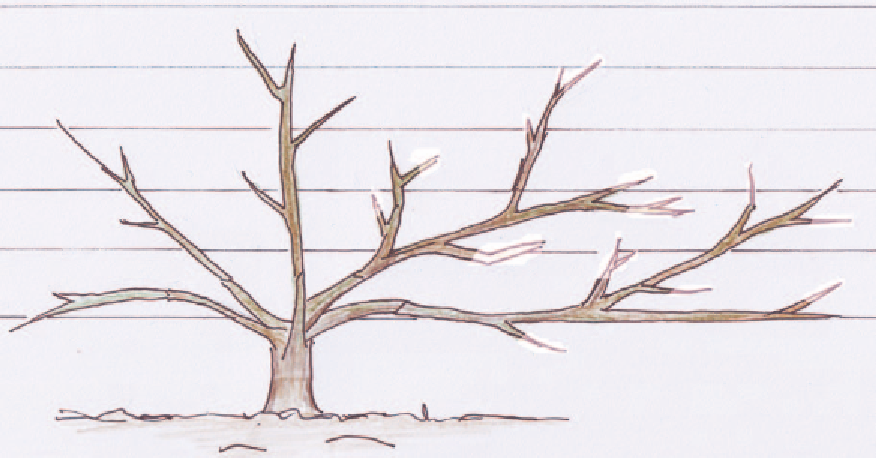Agriculture Reference
In-Depth Information
From the third year cut back side
shoots by a half and continue to
tie the stems to the trellis.
Remove any dead crossed,
crowded or diseased wood.
Second year,
tie in stems
First year, tie in stems
after the initial prune at
planting
Figure 4.45
Pruning climbing roses.
Climbingroses
Climbing roses are ramblers that have been
trained to climb or sports of existing cultivars
that show an inclination to climb. The basic
rule of thumb, after the initial planting
prune, is to let them have their head for at
least two or three years to establish a
framework.
Make sure that new growth is tucked
in or tied to its support as soon as it is long enough
to do so.
Space the stems evenly over the
surface it is to climb on with about 45 cm (the
length from the tip of your fingers to your
elbow) between the stems.
in stems after the initial prune at planting. In
the second year, tie in stems. From the third
year, cut back side shoots by a half and
continue to tie the stems to the trellis.
Remove any dead, crossed, crowded or
diseased wood.
Maintenance pruning at this point depends
on whether the rose f flowers once a year or is
repeat f flowering. Those that repeat through
the season can have the side growths
shortened by a third in winter/spring and
remove any twiggy weak growth as well as
dead wood. To maintain vigorous f flowering
wood, renew the stems by cutting back the
very oldest stems to about 45 cm off the
ground every two to three years depending
on how congested the climber has become.
Do not wait until a particular season for this
job; do it as you see them (see Figure 4.45).
Tie the growth in as soon as it is long enough.
Let them develop a framework for the first
two to three years. In the fourth or fifth year
shorten back the side growths by half.
Renovate according to what sort of rose it is
(see Tables 4.10 to 4.13). In the first year, tie
Climbers that flower once a year start with the
same initial treatment. After the first few
years of establishing a framework, not much is
needed beyond deadheading and shortening

